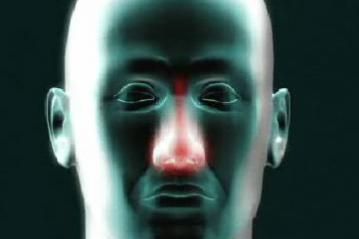Spring allergies, also called hay fever, are seasonal allergic reactions to pollen, grass and weeds. The symptoms can range from mild irritation that affects the nose, skin or eyes and can be treated with over the counter medication, to more severe responses that requires medical attention. The allergic reactions are caused by chemicals that the body releases as defense against the allergen. One of these chemicals is called histamine. It is the histamine that causes the symptoms of allergy; the sneezing, itching, watery eyes and other irritations. Antihistamines in pill form or spray can help relieve the symptoms. Some antihistamines have side effects and some require a doctor's prescription. Decongestants offer temporary relief from a stuffy nose.
The most common type of nosebleed is an anterior nosebleed, caused by very small blood vessels in the front of the nose that are easily damaged. When they break, they cause a nosebleed. This can happen when you blow your nose very often, or when the nasal membranes are dry and irritated. Cold and dry climate conditions, as well as heated air can dry the nasal membranes. Anterior nosebleeds are common in the winter. The medications given to treat the nasal passages for allergic symptoms can also dry the nasal membrane and as a result cause nosebleeds. Sometimes the blood vessels in the nose become irritated and don't heal, which is another cause of nosebleeds as a result of allergies. Overuse of decongestant sprays can also cause dependence, and worsening of the symptoms.
Advertisement
To stop a nosebleed, sit and pinch your nostrils closed, applying steady pressure until the bleeding stops, usually about ten minutes. Do not blow your nose and do not tilt your head back. Frequent nosebleeds may be caused by ongoing allergies, or they may indicate a more serious condition that requires medical attention.
Advertisement

